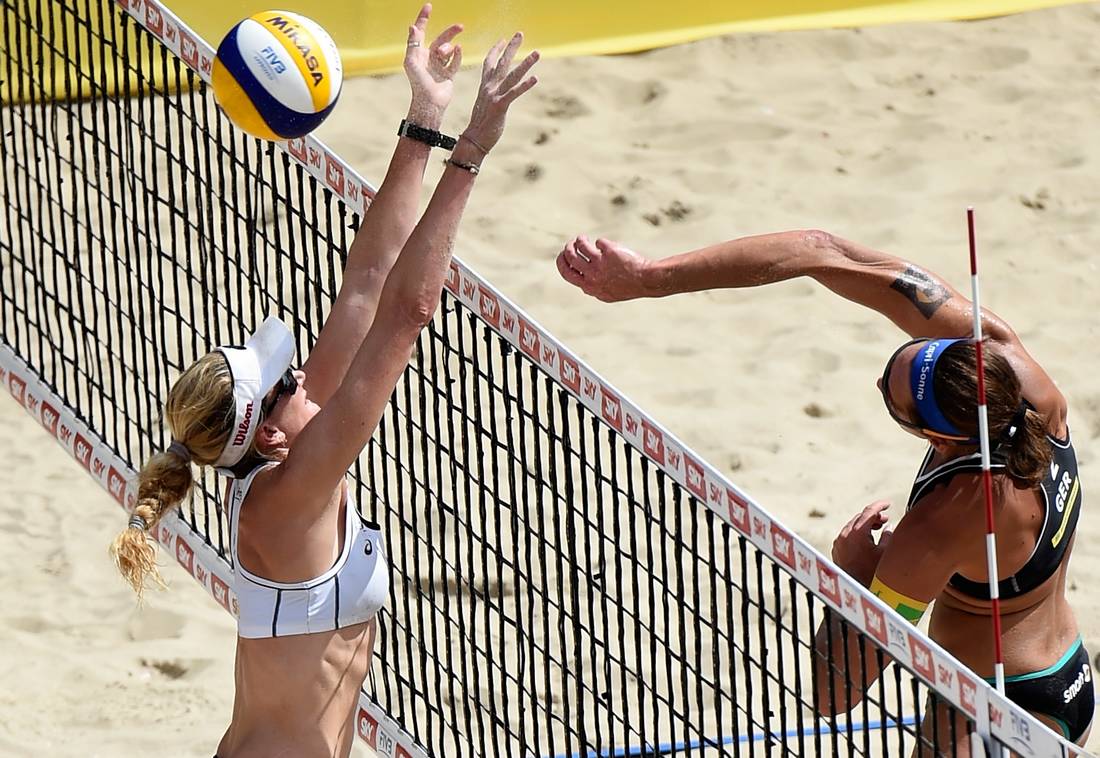دبي، الإمارات العربية المتحدة -- منذ دخول الكرة الطائرة الشاطئية للسيدات غمار الألعاب الأولمبية في دورة أطلنطا عام 2006، والجدل يتكرّر كل دورة تقريبًا حول ملابس اللاعبات، وزاد الجدل هذا العام مع المباراة التي جمعت المنتخبين المصري والألماني، وتلك الصور التي أظهرت عددًا من لاعبات مصر بالحجاب مقابل البيكيني للاعبات ألمانيا.
وإن ترّكز النقاش هذا العام حول الزي "الإسلامي"، فإن البيكيني ذاته كان ولا يزال محلّ نقاش واسع، نظرًا لتركيز الصور والمشاهد الإعلامية على المناطق الحميمية للرياضيات اللائي يلبسن زيًا شبيها بالأزياء الشاطئية في فصل الصيف، وقد أثار اللباس الذي يوصف بالمُغري انتقادات عديدة بينها استقبله البعض الآخر بشكل عادي.
رابطة الحقوق الدولية للنساء، ومقرها فرنسا، سبق لها أن نددت عام 2012 بما وصفه "التمييز" في الرياضة، وقالت متحدثة باسمها في تصريحات صحفية إن هناك "استخدامًا لأجساد النساء بشكل جنسي، وإن الأمر كله يتعلّق بالمال، ممّا يُظهر النساء كأشياء، ويؤكد أن هناك تمييزًا على أساس الجنس".
وكان الاتحاد الدولي للكرة الطائرة قد حدد منذ عام 1999 قياسات للسيدات لا تتعدّى إنشين ونصف عند جانبي البيكيني وسبع سنتمرات في الطول عندما يتعلّق الأمر بالكرة الشاطئية، ممّا خلق اتهامات كبيرة للاتحاد بأنه يرّكز على أجساد اللاعبات أكثر ممّا يركز على اللعب في حد ذاته. غير أن الاتحاد عاد إلى مراجعة قوانينه، وفي عام 2012، وبسبب أحوال الطقس الباردة إبّان أولمبياد لندن، أصدر الاتحاد قرارًا بإمكانية ارتداء أزياء أكثر طولاً، دون أن يمنع ارتداء البيكيني.وزيادة على الجو البارد، فقد برّر الاتحاد القرار الجديد بوجود متطلبات دينية وثقافية في بعض الدول تتطلب مرونة في لباس اللعب، وقد أضحت الكثير من الدول الإسلامية والمحافظة تشارك في إقصائيات الأولمبياد للكرة الطائرة الشاطئية، ممّا يجعل ارتداء البيكيني شرطًا قاسيًا.
وتختار الكثير من اللاعبات ارتداء البيكيني عن طواعية، ومنهم اللاعبة الأمريكية جين كيسي التي صرّحت عام 2012 بأن هذا الزي اختيار مريح وبأنها تعمل على ارتدائه حتى ولو كان الطقس باردًا، كما أعلنت لاعبات المنتخب الأسترالي سابقًا أنهن يفضلن اللعب بالبيكيني. وظهر أن قرار تعديل الزي الخاص بلعب الكرة الشاطئية لدى السيدات قد يتسبّب بأضرار لدى القنوات التلفزيونية، وينقل موقع 10sport أن القرارالجديد قد يُنزّل المشاهدات التلفزيونية، وقد يقلّل من حجم متابعة هذه الرياضة، ممّا يتقاطع مع مخاوف منظمات حقوقية نسائية التي ترى أن الرياضة تمارس تمييزًا جنسانيًا. ويتحدث فابيين بروكاري، صاحب كتاب "الرياضة النسائية: الرياضة، هل هي آخر معقل للتمييز الجنساني؟" عن أن صورة الكرة الطائرة النسائية ستبقى مجاورة لارتداء حمالة الصدر والبيكيني، بما أنه وقع تعميم لهذا الزي منذ دخول اللعبة إلى الأولمبياد عام 1996، لأجل إثارة اهتمام وسائل الإعلام وخلق ضجة كبيرة، فأضحت أجساد اللاعبات أكثر أهمية من لعبهن. وسبق لجريدة ميترو البريطانية أن تناولت موضوع صور كرة الطائرة الشاطئية، وتحدث صحفيوها عن أن هذه الرياضة أضحت ملخصة في الصور المكبّرة لأرداف اللاعبات، ويفسر ذلك بكون غالبية المصوّرين الرياضيين هم من الرجال، إذ يبحثون عن بيع هذه الصور أو إعطاء قيمة تجارية أكبر لها.